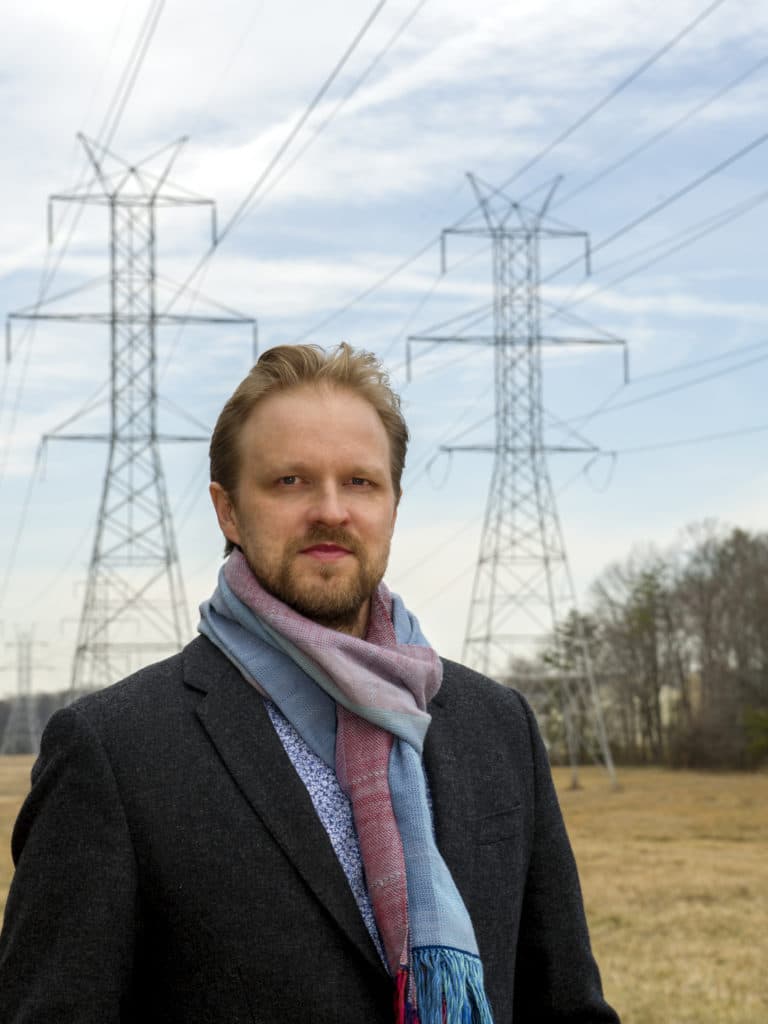
A one-to-two-year pilot project scheduled for launch later this year will utilize U.S. high-voltage power lines as a means to better understand solar events that threaten the electric grid.
Led by heliophysicist Antti Pulkkinen of NASA’s Goddard Space Flight Center in Greenbelt, Md., the research team will use scientific substations installed under high-voltage power transmission lines operated by Virginia’s Dominion Virginia Power to measure a phenomenon known as geomagnetically induced currents (GICs) in real time.
“This is the first time we have used the U.S. high-voltage power transmission system as a science tool to map large-scale GICs,” Pulkkinen said. “This application will allow unprecedented, game-changing data gathering over a wide range of spatial and temporal scales.”
The gathered data will provide an important resource to the power industry, says Pulkkinen, and enable heliophysicists to better study the conditions in Earth’s upper atmosphere that lead to the creation of GICs during severe space weather phenomenon.
According to NASA, GICs typically occur one-to-three days after the sun releases a massive burst of solar wind and magnetic fields known as a coronal mass ejection (CME) into space. If a CME hits Earth’s magnetosphere, the impact can cause electromagnetic fluctuations, which result in geomagnetic storms that can disrupt or damage power lines, satellite instrumentation, oil and gas pipelines and communication and navigation systems.
The impact on the national electrical grid is of particular concern, Pulkkinen said, adding that the Federal Energy Regulatory Commission is focused on developing standards to mitigate the GIC threat. The agency proposed adoption of a new reliability standard intended to mitigate the impacts of geomagnetic disturbances on the nation’s electrical grid earlier this year. Pulkkinen hopes the data from the project will help with creating effective techniques.
“It’s the hottest topic out there right now,” he said. “We need to better understand how these events affect the U.S. power grid.”
As part of their project, the team will create three substations equipped with commercially-available magnetometers capable of precisely measuring the variable magnetic fields associated with GICs. The equipment will be buried four feet underground inside protective, watertight housing unit—two directly below Dominion Virginia Power’s high-voltage lines and the third one, which will provide reference measurements, approximately one-to-two miles away. The magnetometers will be controlled by an iPad application developed by Goddard engineers Carl Hostetter and Troy Adams, which will record and deliver information to a server via a cellular data network, as well as alert the researchers should anything of concern occur.
“In essence, we’re tapping into a very large antenna, Pulkkinen explained. “The high-voltage lines are the antennae. During solar storms, violent changes in the electric current occur in near space, which then are sensed by the transmission lines.”
Ultimately, Pulkkinen hopes to deploy the project nation-wide with the help of long-term funding from a multi-agency collaboration and public-private partnerships.
The project is funded by NASA’s Center Innovation Fund and Goddard’s Internal Research and Development (IRAD) program.






